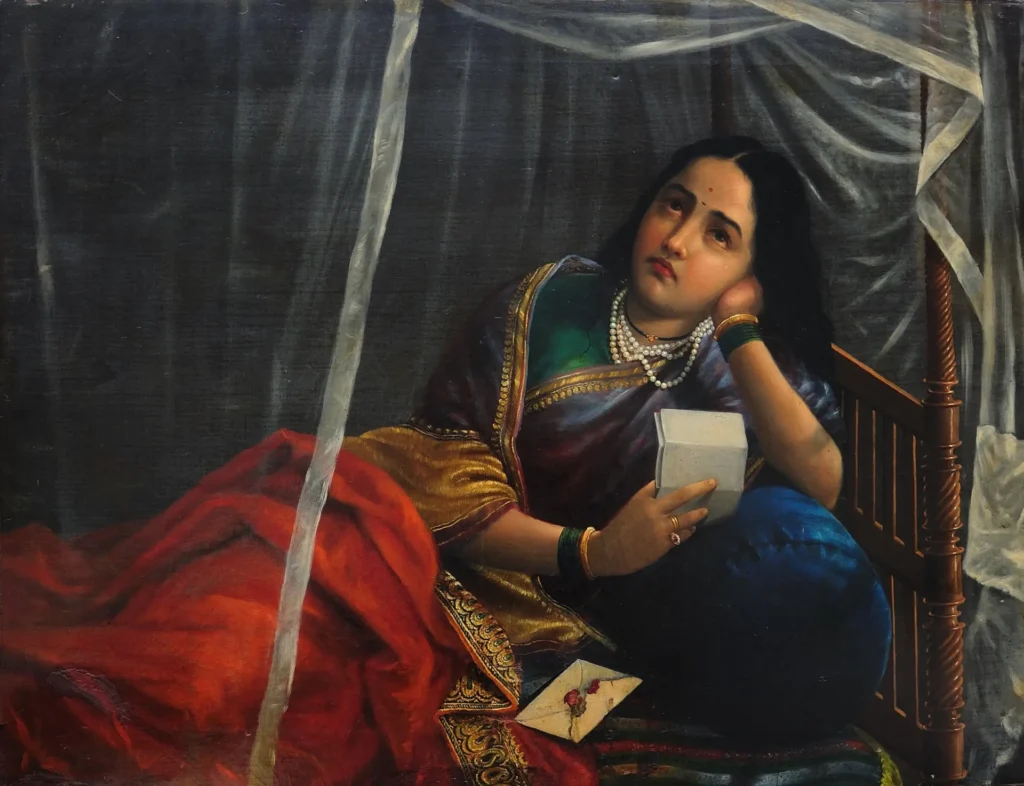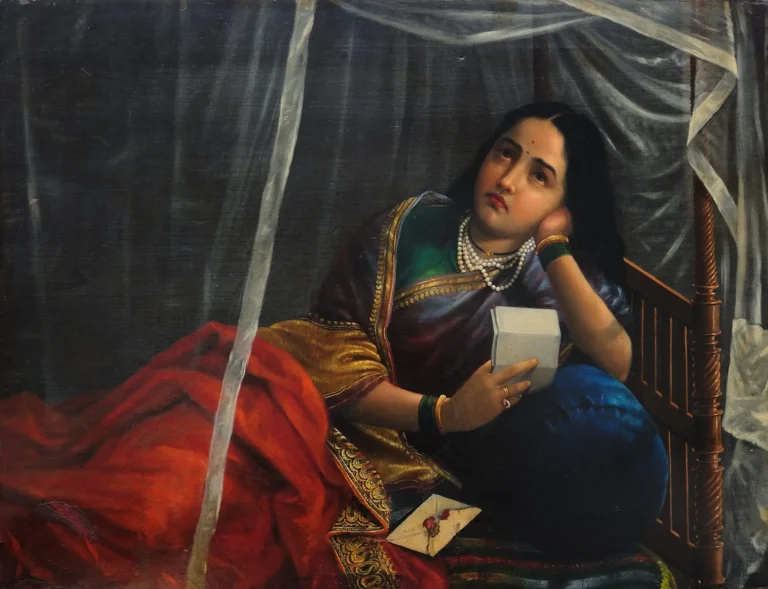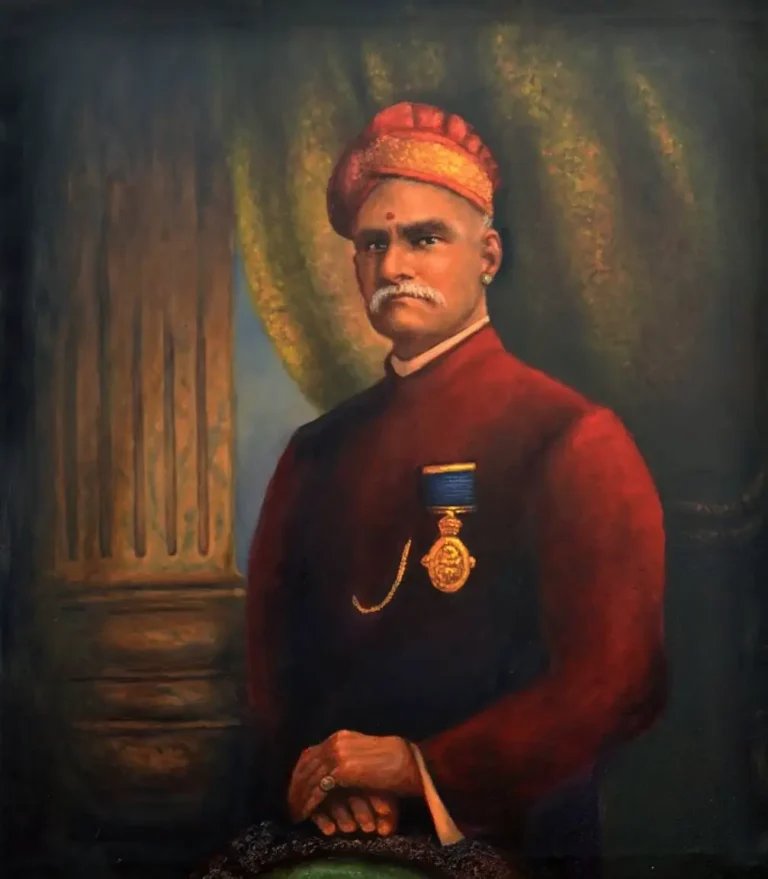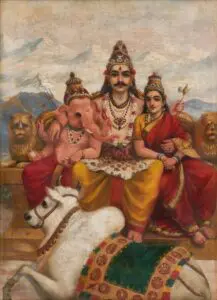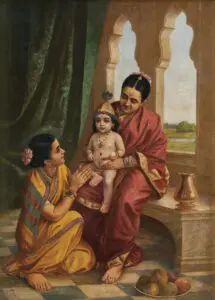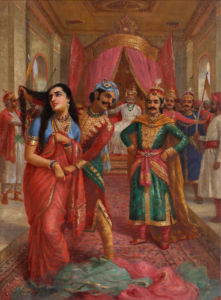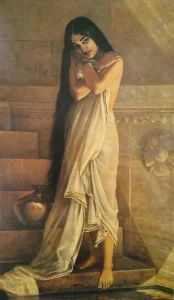Disappointed
Disappointed vividly portrays a woman reclining in bed, enveloped in luxurious textiles, as she reads a letter that conveys sorrowful news. The emotions of disappointment and grief are masterfully depicted through her expression and posture, inviting the viewer into an intimate moment that resonates deeply. Raja Ravi Varma’s use of intricate details, such as the elegant gold-painted frame and the richly adorned attire of the woman—including her silk sari embellished with gold zari and an array of jewelry—enhances the painting's emotional depth. The juxtaposition of beauty and sadness reflects the complexity of human experience.
1848 - 1906
About the Artwork
Raja Ravi Varma painted Disappointed in 1890, when Indian society was undergoing significant cultural changes under British colonial influence. The painting encapsulates a deeply personal moment, reflecting not just an emotional response but also resonating with the collective sentiments of a society grappling with loss and longing. Varma was renowned for merging the traditions of Indian art with Western techniques, and this piece exemplifies that seamless fusion. The woman's reaction to the letter encapsulates the universality of disappointment, and the opulent details underscore the societal expectations of beauty and status. Housed in the prestigious Salar Jung Museum, this artwork is a priceless representation of Varma’s legacy, capturing the intricacies of emotional and cultural narratives.
Did You Know
The painting Disappointed embodies the emotional depth and psychological complexity of human experience, vividly portraying a woman’s heartfelt reaction to personal sorrow.
Raja Ravi Varma is celebrated for his unique ability to blend European artistic techniques with Indian subjects, which can be seen in the intricate details and expressiveness of Disappointed.
Housed in the esteemed Salar Jung Museum, Disappointed remains a significant testament to Varma’s influence on Indian art and his role in shaping modern Indian identity.




